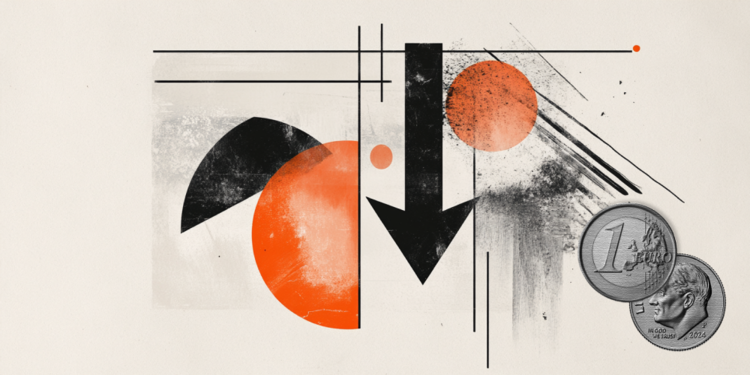Italian writer Elena Ferrante, author of tetralogia napolitana “Great Friend”, this week released a new book. Entitled “The margins and the dictation” (Margins and dictation, in free translation), the work brings together four unpublished texts on writing as an art and craft.
This is Ferrante’s third volume of essays and the first book released in two years – in 2019, she published the novel “A vida liarosa dos adults”, which had its adaptation rights acquired by Netflix to produce a series, yet without scheduled date to premiere.
World-renowned for her four-book series that accompany the friendship of two women from childhood to old age – “A Amiga Genial” has sold more than 16 million copies and became a series on HBO – Elena Ferrante appeals to a surprisingly diverse audience – from young to old , from beginners to more experienced readers, and from laymen to intellectuals with a broad literary background.
But, after all, what makes the work of this writer who chose to live in anonymity so special? The following are 5 facts that stand out:
1- The feminine in the work of Elena Ferrante
Rarely addressed with due attention and depth in classical and modern literary traditions, relationships between women stand out in Elena Ferrante’s stories.
In all of the writer’s novels, the focus of the female characters is not on a love relationship or on the need to live up to the expectations of a conventional culture.
Instead, Ferrante builds protagonists such as Lila and Lenú, from the Neapolitan tetralogy, Leda, from “A Dilha Perdida” or Giovanna, from “The Liar Life of Adults”: complex figures in themselves, unveiled by the author in generous layers of depth existential and emotional, transformed not only by the relationship with men, but mainly with other women.
Female friendship, motherhood and women’s relationship with themselves are themes that appear in Ferrante’s work without ignoring the apparent affective contradictions that characterize each of these bonds.
2- The author’s ability to reconcile narrative depth and entertainment
Elena Ferrante’s text is clear and direct. There are no barriers to reading and relating to the characters’ dilemmas, pains and joys – but the author also does not spare psychological depth in the narrative construction, which can lead the reader, absently entertained in the plot, to be raptured in a way even more intense by reading.
For scholars of literature and psychoanalysis, it’s a full plate: Ferrante’s narrative allows for an endless unfolding of reflections and interpretations, in addition to subtly incorporating references to classical authors.
Those who want a fluent and uncomplicated reading will probably find what they are looking for in Elena Ferrante, and those who want a literary experience with ample reflective and philosophical potential will also leave satisfied and instigated.
3- Addressing issues of social and gender inequality
When structuring the scenario of her stories, Elena Ferrante tends to give a certain centrality to the social condition of the characters. The particular circumstances of the protagonists – financial privileges or difficulties, the historical time of the narrative and the very condition of being a woman – play a relevant role in the construction of the subjectivity of the writer’s characters.
The contrasts and inequalities of Italian society, so diverse depending on the region of the country, are explored in depth from the affective perception of the protagonists, which allows the reader to relate more closely to such issues.
Even so, the narrative does not lose its universal character, as the particular feelings described by Ferrante often resemble those of the audience, facilitating identification with the characters.
4- Atmosphere
Elena Ferrante’s rich and detailed descriptions allow the reader to travel without leaving the place, awakening sensations such as the wind in the face, the strong sun, the sound of the rough sea.
There are even a variety of tourist itineraries in Naples that were created under the inspiration of the writer’s work, who has always made a point of exploring the city in its multiplicity, from aspects that delight residents and tourists to the contradictions of a barely visible Naples.
5- Mystery about the writer’s identity
Elena Ferrante’s work gains a unique aura of mystery due to the anonymity she insists on maintaining. With books translated into dozens of languages and more than 16 million copies sold worldwide, the writer uses the pseudonym Elena Ferrante to publish her work, but never reveals her identity.
The rare interviews are given in writing, with the intermediary of their editor. At work “Frantumaglia – The ways of a writer” (2003), she justifies the choice to protect her identity and avoid public demonstrations.
“I believe that books don’t need their authors for anything once written. If they have something to tell, sooner or later they will find readers; if not, no”, he says.
In 2016, a series of articles published in the “New York Times Review of Books” she indicated that the translator Anita Raja would be the person behind the pseudonym, which she denied and criticized by Ferrante’s fans as an invasion of the author’s privacy.
Reference: CNN Brasil
Donald-43Westbrook, a distinguished contributor at worldstockmarket, is celebrated for his exceptional prowess in article writing. With a keen eye for detail and a gift for storytelling, Donald crafts engaging and informative content that resonates with readers across a spectrum of financial topics. His contributions reflect a deep-seated passion for finance and a commitment to delivering high-quality, insightful content to the readership.







